Abortion and Breast Cancer Awareness Month
In honor of Breast Cancer Awareness Month, it is only fitting that I take a moment to observe that elective abortion is the single most avoidable risk factor for breast cancer. You won’t hear that from places like the Susan G. Komen Breast Cancer Foundation or the National Breast Cancer Coalition, which have been actively complicit with the federal government’s National Cancer Institute in ensuring that elective abortion is also the single most top secret risk factor for breast cancer. As far as I’m concerned, I would sooner give money to a crackhead on the street before I would donate a cent to the likes of those organizations.
I’ve already said elsewhere pretty much all I have to say on the subject. There is the Wisconsin Law Review article I authored while a student at the University of Wisconsin Law School. Here is an appellate brief I filed in a false advertising suit against the Red River Women’s Clinic in Fargo, North Dakota, and here’s our reply brief. The abortion clinic’s briefs and the oral argument before the North Dakota Supreme Court are here. The decision of the North Dakota Supreme Court, construing the North Dakota statute under which we had brought suit and which by its plain language authorized actions to enjoin false advertising by “any person acting for the interests of itself, its members, or the general public” as only authorizing such actions if the person has standing anyway, is here.
Apropos of my recent posts on the free speech rights of lawyers when it comes to judging judges, this unanimous decision by the judges of a state’s highest court was my initiation into the reality that there is no reason to presume that judges are any more “Honorable” than anyone else.
For the few who might be interested in the very end of this particular chapter of this ongoing Big Deadly Lie, I’ve copied below the Petition for Rehearing which we filed and the court ignored. It’s not my best work, as it was written in haste and despair.
TABLE OF CONTENTS
I. The Court overlooked that even persons who have been personally misled and harmed by false advertising would not under ordinary principles of equity have standing to sue for injunctive relief, and that therefore the Court’s opinion nullifies an enforcement mechanism clearly intended by the Legislature. §1
II. Plaintiff’s personal interests in the subject matter of this litigation are at least as strong a basis for standing as those of the State Board of Architecture in State Bd. of Architecture v. Kirkham, Michael & Assoc., Inc.
§6
III. Even if the Court rules that Plaintiff does not have standing, Plaintiff should not be responsible for costs awarded to the Clinic by the trial court below.
§8
I. The Court overlooked that even persons who have been personally misled and harmed by false advertising would not under ordinary principles of equity have standing to sue for injunctive relief, and that therefore the Court’s opinion nullifies an enforcement mechanism clearly intended by the Legislature.
1. The Court bases its conclusion that Plaintiff does not have standing on the circumstance that she “had not read the brochures before filing her action” and that she “does not allege she has suffered an injury from MKG’s putatively illegal action,” implying that a plaintiff who did allege such injury would have standing. Kjolsrud v. MKB Management Corp., No. 20030023, at 9. However, any citizen who becomes aware than an advertisement is false (e.g. by becoming a victim) and is thus in a position to sue is no longer in danger of being personally misled by the advertisement, and thus under general principles of equity would not have standing to sue for injunctive relief. Cf. City of Los Angeles v. Lyons, 461 U.S. 95 (1983) (plaintiff who had been illegally choked by police, while having standing to claim damages, did not establish real and immediate threat that he would again be choked, and thus did not have standing to seek injunctive relief against use of chokeholds by police).
2. The decision of the North Dakota legislature to allow a personally non-aggrieved citizen to bring suit on behalf of the general public to enjoin false advertising thus made perfect sense. Without it, it is difficult to imagine who could bring such a suit. It seems unreasonable to conclude, for example, that only a rival abortion business that was fully disclosing the evidence linking abortion and breast cancer could have brought this suit based on loss of profits, but not a “crisis pregnancy center” engaged in efforts to educate women about the risks of and alternatives to abortion, or an individual engaged in the same enterprise, like the Plaintiff. This is especially so because the principal purpose of the false advertising statute is not to protect business competitors but to protect consumers. As one of the Justices remarked during oral argument in this case, “if the purpose of the false advertising statute is to protect consumers, does it matter who brings the lawsuit?”
3. The Legislature also clearly intended to expand the scope of those who could bring suit to enjoin false advertising beyond the ordinary government actors, and should be presumed to have had good reasons for doing so, such as supplementing limited prosecutorial resources and providing for situations in which a government official may be deterred from challenging a certain business for political reasons. Prior to the filing of this lawsuit, a complaint about the Clinic’s brochures was filed with the North Dakota Attorney General, but to no avail. See T. p.61, l.3-8.
4. Theoretically, a proper plaintiff could bring an identical lawsuit tomorrow challenging the Clinic’s false advertising. However, this Court’s decision provides very little guidance as to who would be a proper plaintiff, not only with regard to the Clinic’s brochures but in the false advertising context generally, chilling actions that the Legislature clearly intended to encourage. The Court’s decision implies that a plaintiff who has suffered actual injury from the Clinic’s advertising would have standing, but for the reasons cited above this is not clear. Plaintiff suggests that the Court, in overlooking the unique feature of the false advertising context that anyone with knowledge enough to consider bringing suit is necessarily in no danger of being misled themselves, has inadvertently and needlessly gutted the false advertising statute of most of its intended force. To avoid guessing games about standing, needlessly duplicative litigation, and the waste of the extensive private and judicial resources already expended in the instant lawsuit, Plaintiff asks the Court to reconsider its narrow interpretation of the false advertising statute. “Chapter 51-12, N.D.C.C., is a consumer protection statute, remedial in nature, which ‘must be liberally construed in favor of protecting consumers.'” Fargo Women’s Health Org., Inc. v. FM Women’s Help and Caring Connection, 444 N.W.2d 683, 685 (N.D. 1989), quoting State ex rel. Spaeth v. Eddy Furniture Co., 386 N.W.2d 901, 903 (N.D. 1986).
5. “It is important to recognize that a statute is conclusively presumed to be constitutional unless it is clearly shown to contravene the State or Federal Constitution.” Shaw v. Burleigh County, 286 N.W.2d 792, 796, citing Dorgan v. Kouba, 274 N.W.2d 167 (N.D. 1978). Interpreting the “any person” language of NDCC 51-12-14 to mean just what it plainly says did not clearly contravene the separation-of-powers doctrine, and indeed the doctrine requires the Court to defer to the legislature’s judgment in the absence of such a clear constitutional infirmity. A “plain language” interpretation of the standing provision does not impose upon the judiciary non-judicial duties. The legislature could not enact a statute capable of effectively prohibiting all the conceivable forms under which false advertising can occur, but rather had to rely on the courts to apply the law to specific fact situations as controversies arose. The Court is thus asked not to render advisory opinions about abstract, hypothetical, or as-yet-unrealized questions, but actual controversies affecting critically important legal rights in the here and now of those persons the statute was designed to protect consumers.
II. Plaintiff’s personal interests in the subject matter of this litigation are at least as strong a basis for standing as those of the State Board of Architecture in State Bd. of Architecture v. Kirkham, Michael & Assoc., Inc.
6. The Court’s opinion appears to adopt the Clinic’s insinuation that Plaintiff’s repetition from the original complaint in her supplemental complaint of her allegations that she was a “pro-life woman who lives in Fargo, North Dakota” and “regularly counsels women seeking abortion about the risks of abortion and about life-giving alternatives” were material untruths that were made with a view to maintaining her standing to bring this lawsuit. Kjolsrud v. MKB, at 2. In fact, in supplementing the complaint to encompass the Clinic’s Current Brochure the standing issue was the furthest thing from Plaintiff’s attorneys’ minds, since the standing issue had already been decided by the trial court at the very beginning of the litigation. Moreover, the statements were not really untrue. Although at the time the supplemental complaint was filed she was not residing in Fargo but was staying elsewhere in North Dakota, she still maintained a mailing address in Fargo and had not yet established a permanent residence. Furthermore, although at that particular date she was not engaging on an almost daily basis in counseling or talking with women seeking abortion about risks and alternatives as she had been at the time of the original complaint, this was an activity she had engaged in for periods of time over a number of years and intended to engage in in the future. The allegations therefore remained true in the sense for which they were clearly intended to introduce the Plaintiff and convey her very real and longstanding interest in ensuring that women considering abortion are fully informed about the risks of and alternatives to abortion. They were deleted from Plaintiff’s amended supplemental complaint not to indicate any material change in Plaintiff’s status but because the Clinic was creating a distraction and Plaintiff felt that under the plain language of the statute they were not really necessary to establish standing.
7. Nevertheless, these interests which Plaintiff affirmed in her original complaint and still holds today are no less concrete and legally cognizable than the interests of the State Board of Architecture which this Court holds were sufficient for standing in State Board of Architecture v. Kirkham, Michael & Assoc., Inc., 179 N.W.2d 409 (N.D. 1970). According to the Court, “the State Board of Architecture suffered a threatened or actual harm by an architectural firm’s allegedly false advertising of architectural services in North Dakota and was asserting its own legal rights and interests.” Kjolsrud v. MKB, at 9. Yet the organizational structure or treasury of the State Board itself were not threatened by the defendant in that case. Thus this Court’s opinion in State Board expressly based the standing of the Board not on ordinary principles of standing, which would have been insufficient, but on the explicit language of NDCC §51-12-14. The State Board indeed had an interest in the subject matter of the litigation, but that interest was not about its own institutional well-being but was directed to the interests of third parties, i.e., those members of the general public in need of architectural services. The Plaintiff in the instant case likewise has a longstanding interest in protecting the interests of women considering abortion that is no less real, important and legitimate than the interest asserted by the State Board.
III. Even if the Court rules that Plaintiff does not have standing, Plaintiff should not be responsible for costs awarded to the Clinic by the trial court below.
8. As Plaintiff argued in her Reply Brief, “Plaintiff was entitled to rely on the plain meaning of the statute and this Court’s decision in State Board when she in good faith brought this lawsuit to serve the public interest.” The Court’s novel and unexpected resolution of the standing issue in this case, which Plaintiff was reasonable in believing was well settled based on the statutory language, State Board, persuasive precedent in California, and the lower court’s decision, renders it wholly unjust that she be required to pay the costs judgment which the court below awarded to the Clinic. Among the factors courts should consider in determining whether an award of costs is appropriate are: misconduct by the prevailing party, the public importance of the case, the difficulty of the issues, the losing party’s limited financial resources, the impact of the loss on the losing party, and good faith in bringing suit. See Whitfield v. Scully, 241 F.3d 264 (2d Cir. 2001); Teague v. Bakker, 35 F.3d 978 (1994). See also 20 Am. Jur. 2d §13. The courts frequently refuse to award costs in cases which involve public questions. See 20 C.J.S. §24. “Generally, in equitable actions, or in any other actions in which the court is by statute vested with discretion in the allowance of costs, costs should not be given to either party where doubtful or novel questions are involved.” Id.
9. Although the Court declined to address the merits of Plaintiff’s claim because of its resolution of the standing issue, the underlying misconduct of the Clinic is a factor the Court should certainly consider in determining the appropriateness of awarding the Clinic its costs at Plaintiff’s expense. The Clinic has persisted throughout this litigation in distributing to the public a commercial brochure which, inter alia, quotes from a 1996 National Cancer Institute fact sheet a patently false statement that has been omitted and corrected in all subsequent revisions of the fact sheet, i.e. “[t]here is no evidence of a direct relationship between breast cancer and either induced or spontaneous abortion.” Suppose that in 1950 the National Cancer Institute had stated, correctly or incorrectly, that “there is no evidence of a direct relationship between lung cancer and cigarette smoking.” Tobacco companies in 2003, or in 1980, could never get away with digging up such a quote and printing on cigarette packages or in advertising that “the National Cancer Institute has stated that ‘there is no evidence of a direct relationship between lung cancer and cigarette smoking.'” Without an explanation of the context from which the quote came, the falsity of the advertisement would be obvious, despite the technical accuracy of the quote. The falsity of the Clinic’s commercial brochures is no less obvious. Yet the Clinic, or rather its attorneys at the Center for Reproductive Rights, have spared no expense in defending the brochures, racking up $30,000+ in costs to pay expert witnesses willing to testify to the absurd proposition that there is no evidence of a direct relationship between abortion and breast cancer. Forcing Plaintiff to pay for the Clinic’s defense of the indefensible and for the false testimony of its expert witnesses would be the height of injustice. Plaintiff is married with two very young children, one of whom was born prematurely and requires extensive medical care and personal attention. Her husband is a U.S. Army private, and provides the sole income for the family. The severe impact of saddling Plaintiff with this unjust debt should be carefully considered by this Court.
10. The federal courts have recognized that litigation can be a form of expression protected by the First Amendment. Particularly when, as here, a lawsuit is brought in good faith solely to serve the public interest with no possibility of personal gain, on a matter of great public importance, and when the lawsuit is resolved not on the merits but on a doubtful and novel question of law, holding the plaintiff responsible for the costs bill of her opponent is a violation of the First Amendment of the United States Constitution.
Respectfully submitted this 7th day of October, 2003,
|
/s/ John Kindley |

 Follow
Follow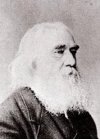
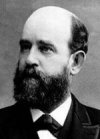
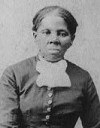



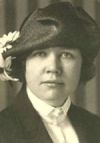
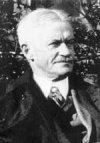
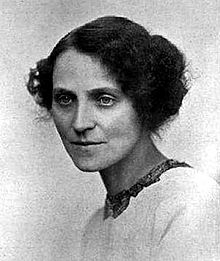

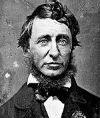
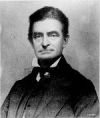
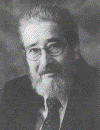
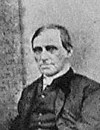
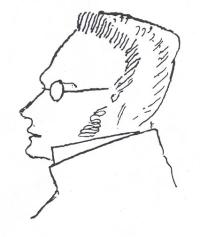
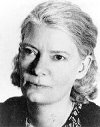
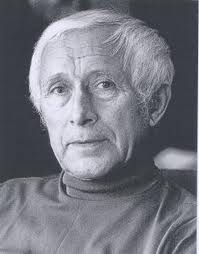
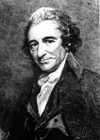

Thanks for putting that out there. It distresses me that so me people do not recognize who the Komen foundation gives money to. My wife has been fighting Breast Cancer for 6 years – and frankly wouldn’t still be alive if not for all the advances that have come from research the last few years. However, it it means living longer or supporting the Komen foundation, she doesn’t see that as a choice at all. When we found out the connection, she took all her Race for the Cure t-shirts and gave them away. There are good organizations to donate, and that is what we do.
I’ll look forward to your future posts.
1Thank you very much for your comment, which obviously touches on an issue that is very close to home for you and your wife. I have my own personal axe to grind against these more well-known and prominent breast cancer organizations, but I also recognize the importance of the research that is being done. To the extent that even these organizations facilitate such research, I can’t fault them. If only they would give equal time to prevention, and not hypocritically suppress information that could prevent many cases of breast cancer. I admire your wife’s principled stance, and am glad you’ve found organizations that are worthy of your support.
2